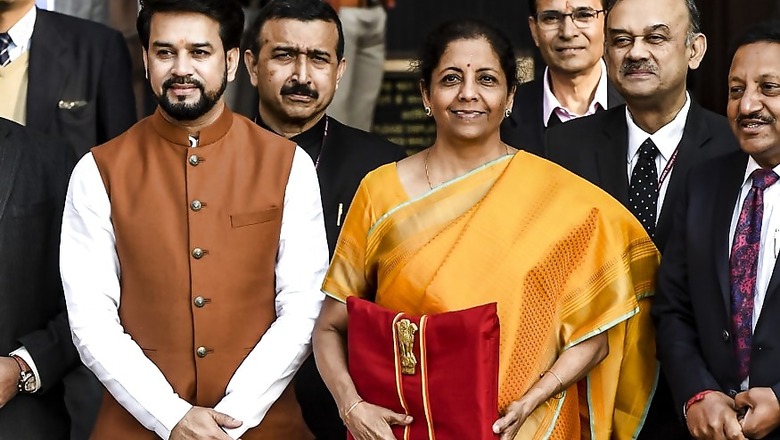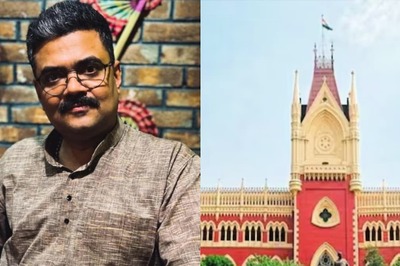
views
Falling short of a ‘Big Bang’ but far exceeding the expectations of sceptics, Budget 2020 contains a slew of innovations that send positive messages to taxpayers, farmers, MSMEs, corporates and investors.
The budget speech was all of 2 hours and 46 minutes long — and would have been longer if FM Nirmala Sitharaman's throat hadn't given out — but it wasn't boring. She broke the tedium of electoral and ideological rhetoric by announcing interesting new proposals, like a Rs 8,000-crore research fund for quantum technology, internships for newbie engineers with Urban Local Bodies, solarisation of farms and FDI (and ECBs) in higher education.
Budgets are mystifying for most people; generally, we end up analysing the proposals in terms of how they directly affect us. For instance, middle-class taxpayers who earn less than Rs 15 lakh per annum will be calculating just how much the new tax slabs will add to their household savings.
What doesn't need much analysis is the overriding message for taxpayers, depositors and investors: ‘Don't Panic’. Sitharaman has tried to allay fears all around — of depositors (by hiking insurance norms), of tax terrorism (through a taxpayers' charter) and investors (through credible and up-to-date statistics).
Nor does it take much analysis to figure out that massive investment in physical infrastructure will do a lot of good. Building roads, seaports, airports and railways involves huge inputs of cement, steel, manpower, etc and tends to have a trickle-down effect. It’s not quite clear where the Rs 103 lakh crore is going to come from, but economists have suggested various options.
Likewise, improving liquidity (through subordinate debt for NBFCs) and foreign investor access, eliminating dividend distributor tax (DDT) and audit requirements for MSMEs and scaling down taxes for cooperative societies is all good for business.
Disinvestment is a contentious issue, but the main question is whether the government, having fallen lamentably short of target last year, can achieve it by bringing LIC and IDBI into the mix.
The big news is mainly on the farm front. The promise of forward and backward linkages in the agriculture value chain is exciting. The government is looking to crack global markets for agricultural produce by putting transport networks in place.
If Kisan Udan plies national and international routes as promised, it holds the tantalising possibility of ensuring better value realisation for farm produce. Kisan Rail, which proposes refrigerated wagons, can reduce the massive loss of perishable produce by offering a much-needed cold chain.
The proposed village-level warehouses managed by women's SHGs will not only improve the farmers’ holding capacity but ensure nutritional security for the village as a whole. Judging from the success of SHG-managed fair price shops, the scheme has a better chance of taking off than the proposed decentralised storage of 162 million tonnes at the block and taluka level.
Integrating negotiable warehousing receipts with the National Agriculture Market is an idea whose time had come years ago. One of the major reasons why NAM hasn't taken off is the lack of infrastructure, particularly storage, at the mandi level.
The solarisation of farms is particularly helpful because — if properly implemented — it can not only boost farm incomes but stimulate manufacture of solar panels and cells, thereby creating jobs. However, state discoms have delayed payments to solar power producers in recent months. Unless this bottleneck is addressed, the solar farms scheme is bound to flop.
The boost to fisheries and animal husbandry is welcome (notwithstanding the prevailing pro-vegetarian atmosphere). The livestock sector has been growing at a compound rate of close to eight per cent for the last five years. Apart from income generation, it has created employment and improved nutrition. If the proposed cold chain for meat, fish and milk materialises, producers and retailers will benefit, leading to accelerated growth.
However, the encouragement offered to zero-budget and organic farming will wind up being just another pie-in-the-sky proposal, unless massive efforts to facilitate access to export markets are made. Organic FPOs (farmer producer organisations) find it difficult to get certification and even harder to deal with international standards.
In terms of horticulture, the ‘One product, One district’ idea may prove to be a non-starter, as monocultures are particularly susceptible to pests and diseases and the costs of crop protection can be crippling. Besides, given the volatile nature of agri-produce markets, diversification is advisable.
The big leap forward in agriculture can only be taken with the cooperation with state governments. Accordingly, this year's budget seeks to incentivise the states to implement three critical pieces of legislation aimed at rationalising use of farm land and liberalising agricultural markets.
The FM will certainly be criticised for not being more circumspect on the fiscal deficit (and her nominal GDP projection), but most experts are not particularly concerned. If it's a choice between keeping the fiscal deficit low and stimulating growth, the latter wins hands down.
Considering that the budget was presented in the backdrop of the biggest slowdown in 15 years (with GDP growth at 5%, manufacturing at 2%, investments at 1% and agriculture at 2.8%), it was a commendable attempt to create a positive sentiment around India's economic potential.
(The author is a senior journalist. Views expressed are personal)



















Comments
0 comment